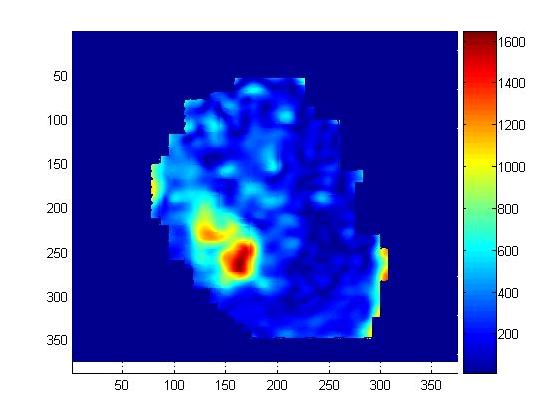.: Click here to download :.
With identity fraud in our society reaching unprecedented
proportions and with an increasing emphasis on the emerging
automatic personal identification applications, biometrics-based
verification, especially fingerprint-based identification, is
receiving a lot of attention. There are two major shortcomings of
the traditional approaches to fingerprint representation. For a
considerable fraction of population, the representations based on
explicit detection of complete ridge structures in the fingerprint
are difficult to extract automatically. The widely used
minutiae-based representation does not utilize a significant
component of the rich discriminatory information available in the
fingerprints. Local ridge structures cannot be completely
characterized by minutiae. Further, minutiae-based matching has
difficulty in quickly matching two fingerprint images containing
different number of unregistered minutiae points. The proposed
filter-based algorithm uses a bank of Gabor filters to capture both
local and global details in a fingerprint as a compact fixed length
FingerCode. The fingerprint matching is based on the Euclidean
distance between the two corresponding FingerCodes and hence is
extremely fast. We are able to achieve a verification accuracy which
is only marginally inferior to the best results of minutiae-based
algorithms published in the open literature. Our system performs
better than a state-of-the-art minutiae-based system when the
performance requirement of the application system does not demand a
very low false acceptance rate. Finally, we show that the matching
performance can be improved by combining the decisions of the
matchers based on complementary (minutiae-based and filter-based)
fingerprint information.
Index Terms: Biometrics, FingerCode, fingerprints, flow pattern,
Gabor filters, matching, texture, verification.
The localization of core point represents the most critical step of
the whole process. A good matching requires an accurate positioning,
so the small errors must also be avoided. The usage of complex
filtering techniques, can greatly improve accuracy. On the other
side, for very poor quality input images, a traditional algorithm
can fail even using a hierarchical approach with a multiscale
filtering.
 |
Figure 1. Complex filtering output |
|||||||||||||||||||||||
|
We have developed a novel, hybrid technique for core point detection. This algorithm, to our knowledge, is not documented in literature and is based on the mutual information that is exchanged between improved procedures. The core point location is more accurately detected by this merging of multiple techniques. This new algorithm was tested on FVC2004 training fingerprint images. Test results are available on request. Please email us in order to obtain them. |
||||||||||||||||||||||||
Demo code (protected
P-files) available for performance evaluation. Matlab
Image Processing Toolbox is required. |
||||||||||||||||||||||||
|
||||||||||||||||||||||||
We recommend to check the secure connection to PayPal, in order to avoid any fraud. This donation has to be considered an encouragement to improve the code itself. |
||||||||||||||||||||||||
Fingerprint Recognition System - Release 5.2 - Click here for
your donation. In order to obtain the source code you
have to pay a little sum of money: 30 EUROS (less than
42 U.S. Dollars). |
||||||||||||||||||||||||
Fingerprint Recognition System - Release 5.0 - Click here for your donation. In order to obtain the source code you have to
pay a little sum of money: 25 EUROS (less than 35 U.S. Dollars). |
||||||||||||||||||||||||
Fingerprint Recognition System - Release 4.0 - Click here for your donation. In order to obtain the source code
you have to pay a little sum of money: 5 EUROS (less than 7 U.S. Dollars). |
||||||||||||||||||||||||
Once you have done this, please email us luigi.rosa@tiscali.it As soon as possible (in a few days) you will receive our new release of Fingerprint Recognition System. Alternatively, you can bestow using our banking coordinates:
|
||||||||||||||||||||||||
The authors have no relationship or partnership
with The Mathworks. All the code provided is written in Matlab
language (M-files and/or M-functions), with no dll or other
protected parts of code (P-files or executables). The code was
developed with Matlab 14 SP1. Matlab Image Processing Toolbox is required.
The code provided has to be considered "as is" and it is without any kind of warranty. The
authors deny any kind of warranty concerning the code as well
as any kind of responsibility for problems and damages which may
be caused by the use of the code itself including all parts of
the source code.

